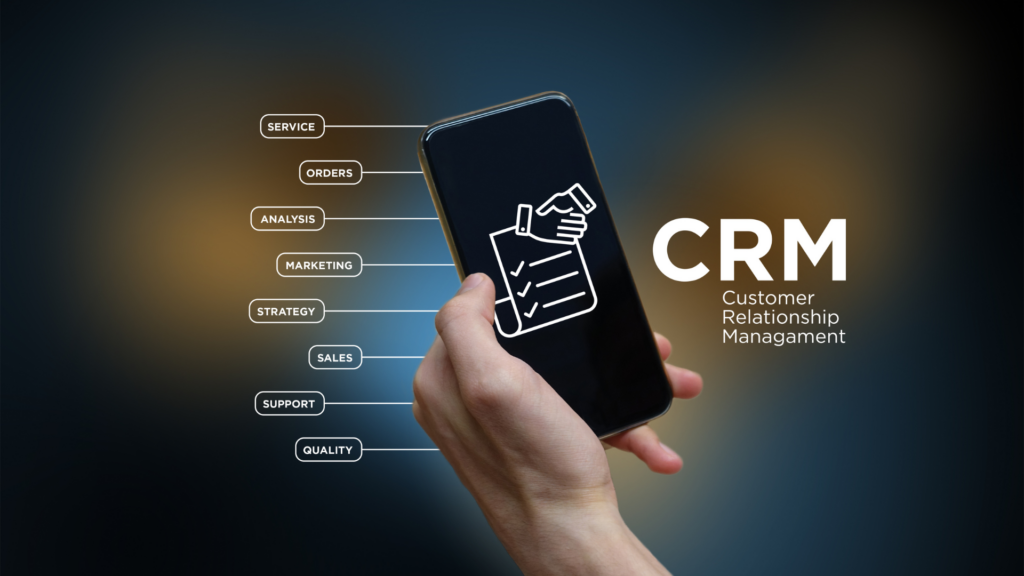
The Anatomy of The One-Stop Shop EHR App: Revolutionizing Healthcare Efficiency
In today’s healthcare landscape, Electronic Health Record (EHR) systems play a crucial role in enhancing patient care, improving healthcare providers’ efficiency, and streamlining administrative tasks. However, the complex nature of these systems has led to numerous challenges in terms of usability and user experience (UX). As the amount and complexity of data accumulated in EHRs increase, it becomes imperative for developers to design an app that prioritizes user experience and accessibility.
Enter PulseLogs, the one-stop-shop EHR app, designed to address these critical concerns and transform the way healthcare professionals interact with and manage patient records. This innovative application ensures a comprehensive, user-friendly experience by incorporating a more intuitive interface, responsive design elements, and smooth navigation. By simplifying the process of accessing and managing patient data, this EHR app enables clinicians to make well-informed decisions and deliver better patient outcomes.
Not only does the exceptional UX design make this app stand out among its competitors, but it also helps reduce the cognitive load on healthcare professionals, who are constantly bombarded with numerous administrative tasks and decision-making responsibilities. By offering a seamless EHR experience in a single application, healthcare providers can manage their workflows efficiently while still enjoying a pleasant user experience, illustrating the significant impact UX design plays in the evolution of healthcare technology.
The One-Stop Shop EHR App
App Essentials
The one-stop shop EHR app aims to revolutionize the healthcare industry by providing an exceptional user experience for doctors, nurses, and clinicians. By streamlining and centralizing electronic health records, this app ensures ease of access and efficient management of patient information.
The ambience of the app is enhanced by a friendly user interface, tailored to cater to the diverse needs of healthcare professionals. This ensures seamless navigation through essential features, making the app a valuable tool for the medical community.
Core Features
Some of the core features of this EHR app include:
- Access to comprehensive patient records, allowing for more informed decision-making and improved patient outcomes
- Secure messaging between healthcare providers for efficient communication and coordination
- Integration with mobile devices, enabling clinicians to work on-the-go and utilize free moments throughout their day, as the PulseLogs mobile app offered by Pulse iQ
- Promoting data liquidity and supporting team-based care, as recommended by the American Medical Association
- Easy-to-use and customizable order-entry systems, facilitating the creation and signing of orders
- Reduced cognitive workload, resulting in decreased burnout rates among healthcare providers
Integration with Other Systems
A vital aspect of this one-stop shop EHR app is its ability to integrate seamlessly with other healthcare systems. This connectivity ensures that patient information is readily available to authorized users, promoting better care coordination and effective communication.
For example, the AxiaGram app provides the capabilities of an EHR on mobile devices, enabling healthcare professionals to stay connected and improving patient care. Similarly, the Mount Sinai Health System introduced a centralized mobile app for patients, simplifying access to essential health services.
With its powerful features, user-friendly interface, and seamless integration capabilities, the one-stop shop EHR app stands out in the healthcare industry, paving the way for a more efficient, coordinated, and responsive healthcare system.
Enhancing User Experience (UX)
User-Centered Design Approach
To deliver a one-stop shop EHR app with an exceptional user experience, a user-centered design approach is critical. This process involves understanding the needs, preferences, and challenges clinicians and other healthcare professionals face when using EHR systems. The user experience design process includes research, iterative design, testing, and feedback from end-users.
By involving clinicians and other stakeholders in the design process, developers can create an EHR app that focuses on facilitating patient care and improving engagement. This collaborative approach ensures the app addresses the real-world challenges users face and results in a more accessible, efficient, and user-friendly solution.
Usability Best Practices
In addition to user-centered design, incorporating usability best practices is essential for exceptional UX in an EHR app. Some key aspects of usability include:
- Clear and consistent navigation: The app’s structure should be intuitive, allowing users to quickly find the required information with minimal clicks.
- Readable and legible text: Use appropriate font sizes and sufficient contrast to ensure the content is easy to read.
- Responsive design: The app should be adaptable to various screen sizes and devices, providing optimal user experience across different platforms.
- Feedback mechanisms: The system should offer timely and informative feedback to users about the results of their actions or system status.
Incorporating these best practices will make the EHR app more efficient for clinicians, improving patient care and reducing the learning curve for new users.
Reducing Cognitive Load
Reducing cognitive load is an essential aspect of improving the user experience in EHR systems. Characteristics of an EHR app aiming to reduce cognitive load include:
- Organized information: Displaying relevant data in a structured and meaningful way makes it easier for clinicians to understand and process the information.
- Simplified workflows: Streamlining tasks and reducing unnecessary steps will save time and minimize the cognitive effort required to complete tasks.
- Data visualization: Use graphs, charts, or other visual aids to summarize complex data and make it easier to understand.
- Contextual assistance: Providing context-sensitive help, guidance, or suggestions can support users and improve their workflow efficiency.
By incorporating these elements into the EHR app design, developers can reduce cognitive load on the users, ultimately enabling them to focus on providing quality patient care.
Design Process and Workflow
In the development of a one-stop-shop EHR app, the design process and workflow play a crucial role in ensuring that the end product delivers an exceptional user experience. This section discusses the steps involved in the design process and workflow, focusing on three main sub-sections: Information Visualization, Interaction Design, and Prototyping.
Information Visualization
Information visualization is a fundamental aspect of the EHR app design process. In this stage, designers work closely with healthcare professionals and usability experts to understand the needs of the users and create a data-driven project plan. They use various tools and graphics to present complex healthcare data in an understandable and easy-to-process format. Visualizing the data ensures that users can comprehend and interact with the appp more efficiently. This approach facilitates better decision-making and improves the overall performance of the EHR system.
A few key elements of information visualization include:
- Use of clear and easy-to-read typography
- Use of color schemes that enhance readability and accessibility
- Organization of data into structured layouts, like tables or charts
- Implementation of filter and search functionalities to quickly locate information
Interaction Design
Interaction design focuses on the overall relationship between the user and the EHR app. The primary goal is to ensure smooth and seamless interactions between the app’s interface and its users. Designers should consider factors such as responsiveness, intuitiveness, and simplicity of navigation when creating the EHR app’s user interface (UI) design.
To achieve an effective interaction design, the team can adopt a human-centered design approach, involving the following steps:
- Identifying the target audience, their needs, and requirements
- Mapping out user flows and creating wireframes to visualize the journey
- Testing the UI design to identify potential issues or areas for improvement
- Iterating and refining the design based on user feedback and usability testing
Prototyping
Prototyping is a crucial part of the EHR app design process. It involves creating interactive mockups or working models of the app to test its functionality and usability. This allows designers to identify potential issues or gaps in the design, address them, and iterate on the product strategy before the actual development begins.
There are different levels of prototyping, from low-fidelity sketches to high-fidelity, fully-functional prototypes. Regardless of the level, prototypes are essential for gathering customer feedback, refining the UI design, and ensuring that the app meets the users’ expectations.
In conclusion, a well-designed EHR app should prioritize information visualization, interaction design, and prototyping to deliver an exceptional user experience. These sub-sections of the design process and workflow ensure a user-friendly and efficient EHR system that meets the needs of healthcare professionals and patients alike.
Optimizing Efficiency and Productivity
Optimizing EHR Usage
One of the key factors in creating a one-stop shop EHR app with an exceptional user experience (UX) is optimizing efficiency and productivity. The goal is to enhance the workflow and improve interoperability for healthcare providers. A well-optimized EHR enables faster navigation, easier system management, and more focused patient care.
To achieve this, consider the following steps:
- Integrate analytics tools to monitor and improve EHR usage
- Ensure EHR software is user-friendly and easy to navigate
- Enable seamless sharing of patient data between providers and organizations
- Foster collaboration between healthcare teams by providing a secure platform for communication and content sharing
User Testing and Feedback
To ensure an EHR app offers an optimal user experience, developers must conduct rigorous user testing and gather feedback from the target audience. By incorporating feedback from healthcare providers and staff, developers can ensure that their EHR app addresses the critical pain points faced by users.
To involve users in the development process, consider these approaches:
- Implement a system for feedback and suggestions from healthcare providers
- Leverage analytics to evaluate how users interact with the app and identify any usability issues
- Organize focus groups or simulation exercises to observe users in real-world scenarios and gather insights
Incorporating user feedback and conducting ongoing user testing ensures the EHR app remains highly effective and relevant, adapting to the ever-changing needs of healthcare providers.
Responding to the Pandemic
As the global pandemic has shown, the need for efficient and interoperable EHR systems is more critical than ever. Providers require an all-in-one solution to manage patient data and streamline their workflows, helping them respond quickly and effectively to rapidly evolving situations.
In addition to the general optimization strategies mentioned earlier, the EHR app should also have specific features tailored to address the challenges posed by the pandemic:
- Integration with public health reporting systems, such as NICD and USCH, for timely data sharing
- Support for telemedicine consultations, ensuring continuity of care during lockdowns or surges in cases
By offering an app that caters to the unique demands of the pandemic, developers can deliver a tailored solution that stands out in the market and empowers healthcare providers to deliver the best possible care for their patients.
Addressing Physician Burnout
Streamlining Workflows
One of the key factors contributing to physician burnout is the burden of inefficient workflows in their daily practice. An improved one-stop-shop EHR app with exceptional user experience (UX) could make a significant difference in this area. By integrating all essential tasks into a single platform, physicians can manage their work more efficiently, which in turn reduces burnout.
To accomplish this, the EHR app can include features such as:
- Intuitive navigation and organization of patient data
- Seamless integration with other healthcare systems and devices
- Customizable templates for common documentation tasks
By streamlining these workflows, the one-stop-shop EHR app allows healthcare providers to focus on delivering quality patient care, rather than struggling with cumbersome technology.
Implementing Artificial Intelligence
Another effective approach to address physician burnout is to incorporate artificial intelligence (AI) into the EHR app. AI has the potential to significantly reduce the administrative burden on physicians by automating various tasks and improving overall efficiency.
Some potential AI implementations in the EHR app include:
- Natural language processing for efficient documentation
- Predictive analytics for identifying high-risk patients or potential health issues
- Decision support tools to aid physicians in making informed clinical decisions
The integration of artificial intelligence in the one-stop-shop EHR app can work hand-in-hand with streamlined workflows to alleviate stress and increase overall satisfaction among healthcare providers. As a result, this combination could be a powerful tool in the fight against physician burnout.
Future of EHR and UX Design
Emerging Technologies
The landscape of Electronic Health Records (EHR) is evolving rapidly with emerging technologies that enhance the user experience (UX). The integration of artificial intelligence and machine learning into EHR systems is expected to revolutionize the way healthcare providers interact with patient data. These advancements will aid in analyzing large quantities of data, helping healthcare professionals make better decisions and streamline workflows.
Another game-changing technology is the use of voice recognition, which can potentially improve efficiency and accessibility for users. Implementing natural language processing will enable healthcare providers to more accurately and efficiently input and retrieve information from EHR systems.
New User Experience Trends
As UX Design evolves in the healthcare industry, EHR vendors are focusing on user-centered designs to improve usability and deliver enhanced experiences to healthcare providers. Some vital best practices in UX design for EHR systems include:
- Information Visualization: Displaying EHR data in an easy-to-understand visual format is essential for improved usability. Designers should follow screen design principles that allow users to view single patient data, summarize or title data for overviews, and provide detailed information on demand.
- User-Centered Design Approach: Involving healthcare professionals in the design and iterative testing processes helps in understanding their needs and pain points. This approach leads to more effective and efficient EHR systems.
- Human-Centered and Equity-Centered Design: Adopting these design methods in the development of EHR systems plays a pivotal role in enhancing user experience. Some examples include visualizing patient asthma history using HCD processes.
- Addressing Burnout and Stress: EHR vendors are focusing on redesigning UI and UX to minimize burnout and stress among healthcare providers. Improving usability and reducing the cognitive load on users is crucial in achieving better user satisfaction.
By embracing these emerging technologies and UX design trends, the future holds promise for a more user-friendly and efficient electronic health record system.
Leave a Reply
2 thoughts on “The Anatomy of The One-Stop Shop EHR App: Revolutionizing Healthcare Efficiency”
- AI in Diagnostics: Revolutionizing Early Detection and Accuracy
- How AI and Advanced Analytics Are Transforming Healthcare Outcomes
- Investing with Confidence: The Role of ROI Calculators
- How ROI Calculators Drive Data-Driven Business Strategies
- The Ultimate Guide to ROI Calculators for Business Success
- Making Sense of ROI Calculators: A Comprehensive Guide
- June 2025 (1)
- May 2025 (1)
- October 2024 (2)
- September 2024 (31)
- August 2024 (31)
- July 2024 (27)
- June 2024 (28)
- May 2024 (30)
- April 2024 (33)
- March 2024 (23)
- February 2024 (29)
- January 2024 (3)
- December 2023 (47)
- November 2023 (36)
- October 2023 (23)
- September 2023 (2)
- June 2023 (2)
- May 2023 (13)
- April 2023 (1)





[…] Health Records (EHR) are revolutionizing the healthcare industry, especially in counseling facilities. These digital records offer a wide […]
[…] is a one-stop-shop electronic health record (EHR) app that can help you manage your healthcare practice like a pro. […]